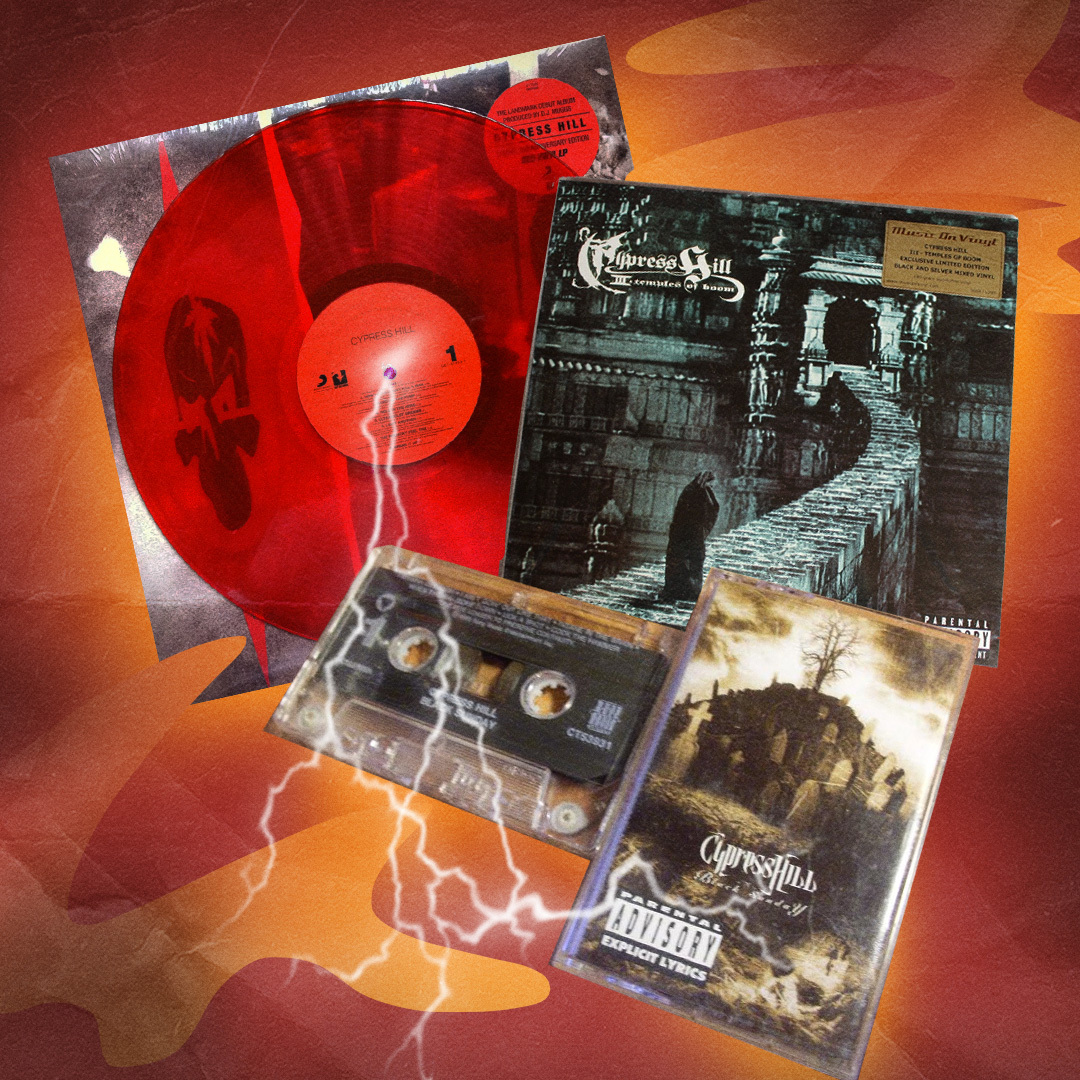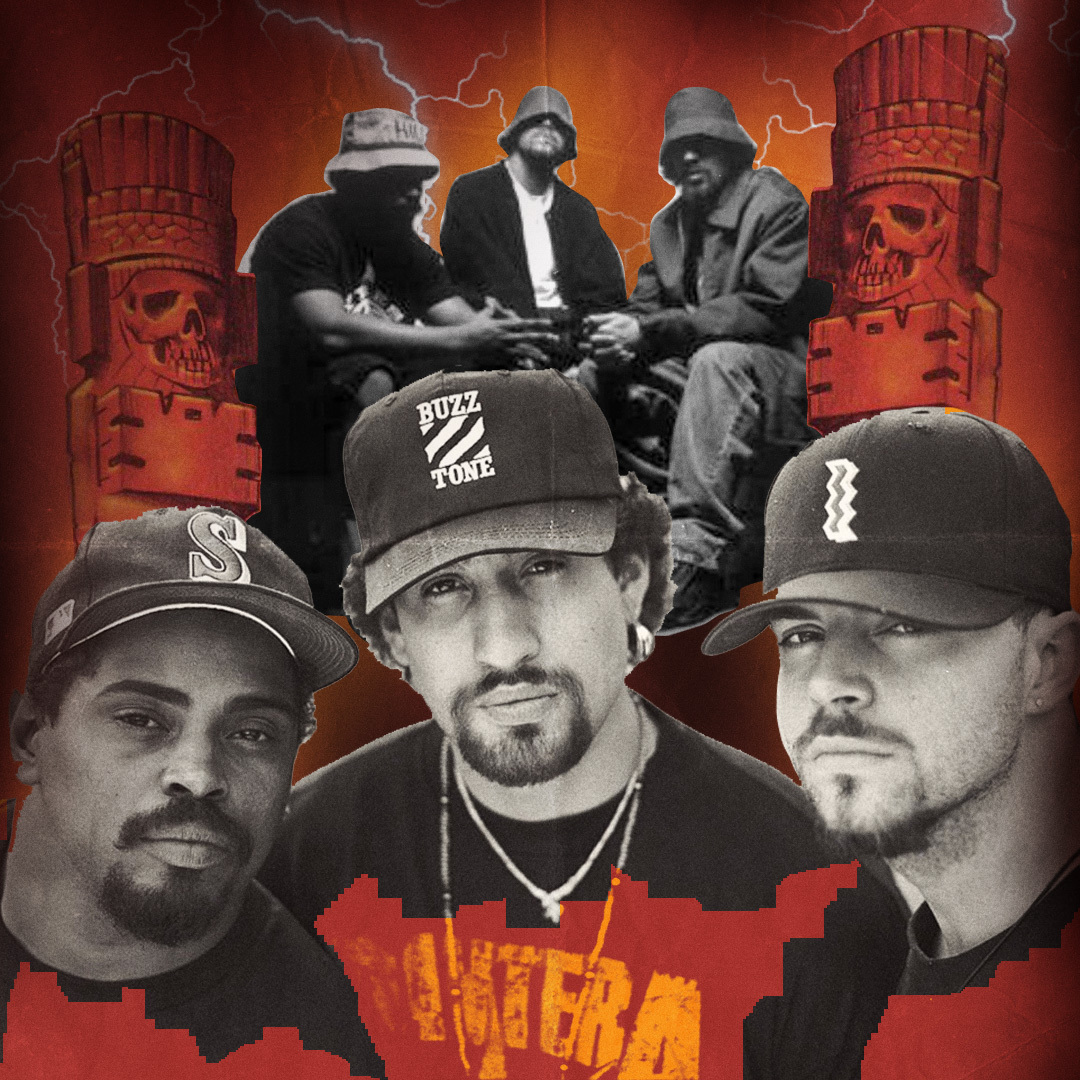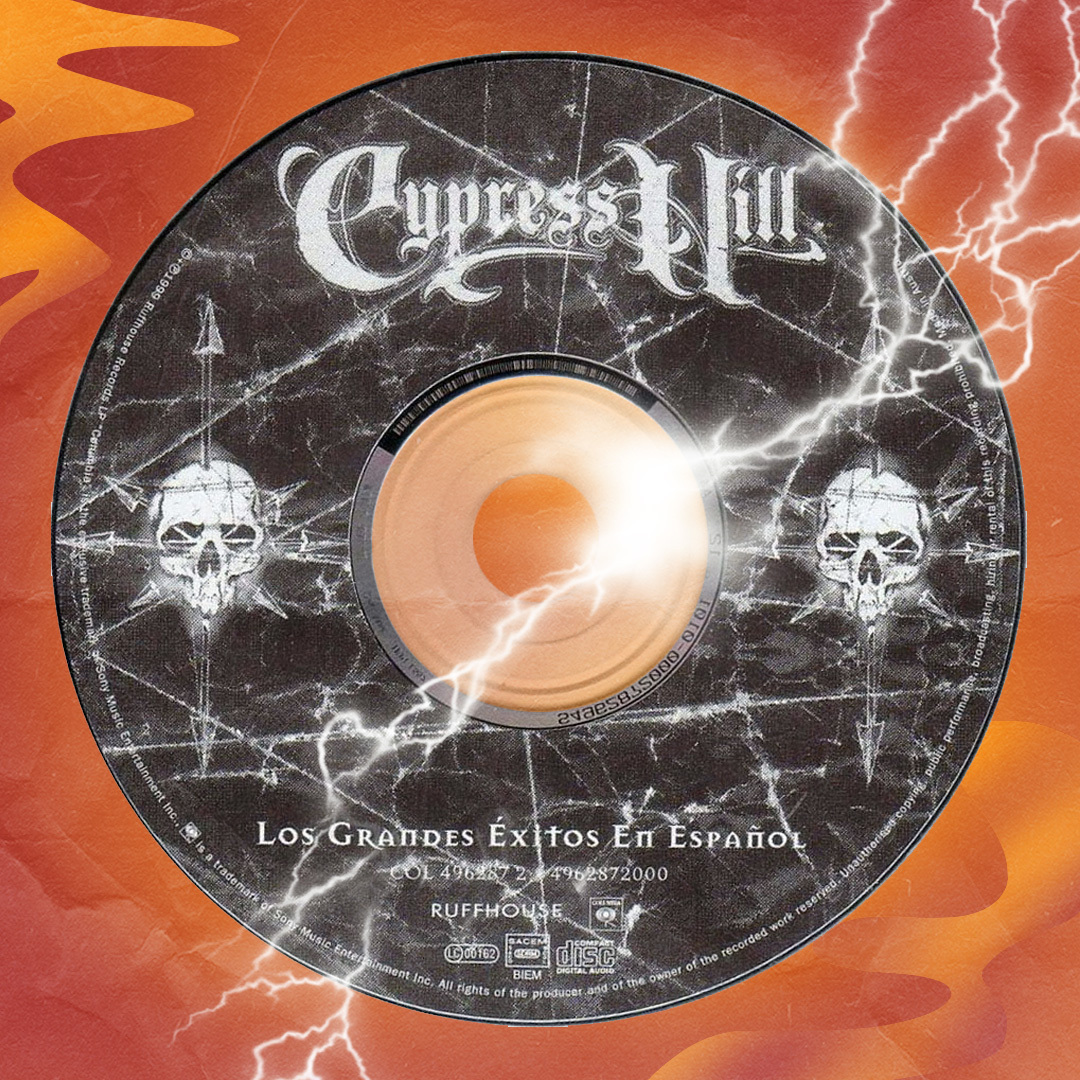Cypress Hill had nothing to lose. By the year 1999, the Los Angeles-based hip-hop group had become one of the biggest acts of the genre thanks to their unique style—claustrophobic beats that soundtracked tales of street violence and stoner anthems that were equal parts comedy and gritty storytelling. Yet they made perhaps their biggest contribution to the music when they decided to make a whole album of their greatest hits in Spanish, Los Grandes Éxitos En Español.
In the process, they helped shine a light on the emerging hip-hop scene in Latin America, giving credence to rappers and DJs from the continent like Control Machete, Tiro de Gracia, Vico C, among others.
Emerging from the Los Angeles Latin rap micro-scene that gave us Kid Frost and Mellow Man Ace (been Sen Dog’s brother and part of pre-Cypress band DVX); Cypress Hill set themselves apart thanks to their weed-centric narratives, gangsta storytelling and laid back musical approach. All of the aforementioned put them in the same league as fellow West Coast artists like Dr. Dre and Snoop Dogg, etc; however, there was nothing else quite like the combined efforts of DJ Muggs’ post-Public Enemy noisy/hazy/jazzy beats, B-Real’s nasal whine and Sen Dog’s gruff counterpoint voice at the time.

The coalition of these elements helped them propel their first three albums—1991’s Cypress Hill, 1993’s Black Sunday, and 1995’s Cypress Hill III: Temple of Boom—to multi-platinum status. They toured with everybody from Lauryn Hill to Rage Against The Machine, appeared on Lollapalooza and Woodstock 94, and even landed on the legendary Simpsons episode “Homerpalooza.” Without a doubt, they became one of the decade’s most representative bands.
Cypress Hill reassured U.S. Latinos’ place in hip-hop history.
Prior to Grandes Éxitos en Español, Cypress Hill had a weird relationship with Latin hip-hop. Their debut album featured two songs in Spanish, “Latin Lingo” and “Tres Equis,” with the former released as a single, perhaps in hopes of following the success of “La Raza” and “Mentirosa.” Yet the band’s Latine signifiers were more aesthetic than explicit. According to the book Mambo Montage: the Latinization of New York City, Cypress Hill was “part of the hip-hop core—as opposed to the fringes that Latin rap artists occupied […] developing as part of a nationwide Latino/Americano hip-hop aesthetic […] Their relative Afrocentrism doesn’t necessarily mean they’re not reaching for vatos in the hood.” In essence, Cypress Hill reassured U.S. Latinos’ place in hip-hop history—especially those who didn’t speak Spanish, finding heirs in Big Pun, Noreaga and Fat Joe, among others.

Yet, their sound and aesthetic—from their laid-back but menacing stoner stance to their cholo-indebted wardrobe—helped them become a huge influence in Latin American hip-hop, too. During the ‘90s, the genre took root in countries like Argentina, Venezuela, Chile, Mexico, and Puerto Rico. While the roots of this genre can be traced back to the ‘80s when it was imported as a dance craze, it was during the following decade that the sound of Latin American hip-hop was forged and consolidated with a characteristic voice. Soon enough, various acts emerged from their respective scenes to achieve international success.
1995 saw the release of Illya Kuryaki and the Valderramas’ Chaco, a funk-rock fusion album that displayed its rap influences upfront and became an international success. In 1996, Mexico’s Control Machete had dropped their debut full-length, Mucho Barato, which quickly became one of the most important albums of the genre in Latin America by cementing a style that both nodded to the U.S. and maintained its own identity. The following year, Chile’s Tiro de Gracia dropped their own first LP, Ser Humano, to commercial success. These albums signaled a new movement taking place: Cypress Hill was a palpable influence for the rising sound of Illya, Control, Tiro, and scores of others—heard in both the rhymes and beats found within their music.

Cypress Hill’s impact was not lost on the members of the band.
“We wanted to do (a Spanish album) a long time ago, but we never really had the proper amount of time to do it,” B-Real told The Chicago Tribune in 1999. “It was mainly for our Latin fans in the Latin countries who didn’t understand English. We wanted them to get a clear understanding of what these songs were. Although they liked the way the music sounded, they never really truly understood it. We wanted to give them something that they could understand and call their own.”
Cypress Hill was a palpable influence.
The album opens with “Yo Quiero Fumar,” a reversion of their Black Sunday track “I Wanna Get High,” and sets the tone for the rest of the album. “Yo Quiero Fumar” sounds like it was written in Spanish; there are no awkward lyrical placements and the flow of the words integrates itself amazingly. The record then follows some of their biggest hits; “Insane In The Brain” (which contains a diss to Kid Frost) becomes “Loco En El Coco,” while “How I Could Just Kill a Man” turns into “No Entiendes La Onda.”
Los Grandes Éxitos en Español moves between singles and deep cuts alike, forming a cohesive flow in the tracklist. However, the two biggest highlights are the ones with guest rappers. “No Pierdo Nada” reunites Cypress Hill with Mellow Man Ace, the first rapper to score a hit with a hip-hop song in Spanglish, making for a historic event. Similarly, the only previously unreleased track on the set, “Siempre Peligroso” (later rewritten as “We Live This Shit” for their album Skull and Bones) features Fermin IV of Control Machete, giving a huge nod to Latin American hip-hop and closing the circle.
It cemented Cypress Hill as architects of a sound that made history.
While Cypress Hill was no longer the cultural behemoths of their mid-’90s heyday, they were still one of the biggest bands on the planet. By giving credence to Latinxs in hip-hop, Los Grandes Éxitos might be one of the most important hip-hop albums of all time. It’s a document of the role Latinxs have played in hip-hop throughout the years, from their contributions during the dawn of the culture to making contributions to the aesthetics of the genre in the late ‘80s to giving us some of the most versatile personalities in the game. It’s a culmination of two decades in the genre and reassurance of the beginning of the culture outside its boundaries as it was taking root in Latin America. Los Grandes Éxitos En Español cemented Cypress Hill as architects of a sound that made history.







